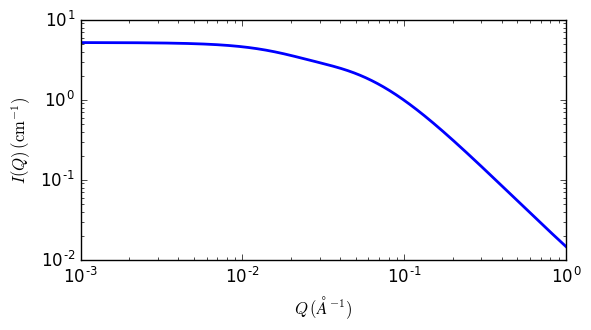gel_fit
Fitting using fine-scale polymer distribution in a gel.
| Parameter | Description | Units | Default value |
|---|---|---|---|
| scale | Source intensity | None | 1 |
| background | Source background | cm-1 | 0.001 |
| guinier_scale | Guinier length scale | cm^-1 | 1.7 |
| lorentz_scale | Lorentzian length scale | cm^-1 | 3.5 |
| rg | Radius of gyration | Å | 104 |
| fractal_dim | Fractal exponent | None | 2 |
| cor_length | Correlation length | Å | 16 |
The returned value is scaled to units of cm-1 sr-1, absolute scale.
This model was implemented by an interested user!
Unlike a concentrated polymer solution, the fine-scale polymer distribution in a gel involves at least two characteristic length scales, a shorter correlation length ( \(a1\) ) to describe the rapid fluctuations in the position of the polymer chains that ensure thermodynamic equilibrium, and a longer distance (denoted here as \(a2\) ) needed to account for the static accumulations of polymer pinned down by junction points or clusters of such points. The latter is derived from a simple Guinier function. Compare also the gauss_lorentz_gel model.
Definition
The scattered intensity \(I(q)\) is calculated as
where
Note that the first term reduces to the Ornstein-Zernicke equation when \(D = 2\); ie, when the Flory exponent is 0.5 (theta conditions). In gels with significant hydrogen bonding \(D\) has been reported to be ~2.6 to 2.8.

Fig. 89 1D plot corresponding to the default parameters of the model.
References
Mitsuhiro Shibayama, Toyoichi Tanaka, Charles C Han, J. Chem. Phys. 1992, 97 (9), 6829-6841
Simon Mallam, Ferenc Horkay, Anne-Marie Hecht, Adrian R Rennie, Erik Geissler, Macromolecules 1991, 24, 543-548